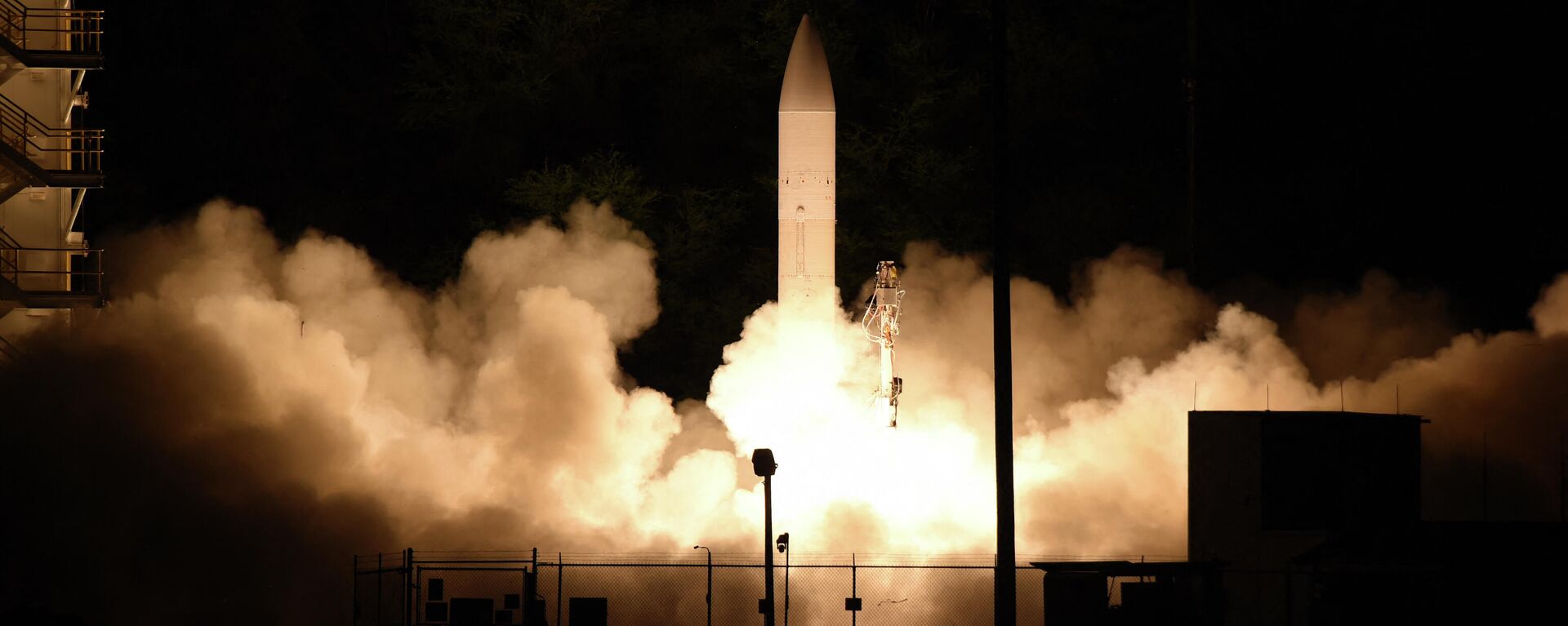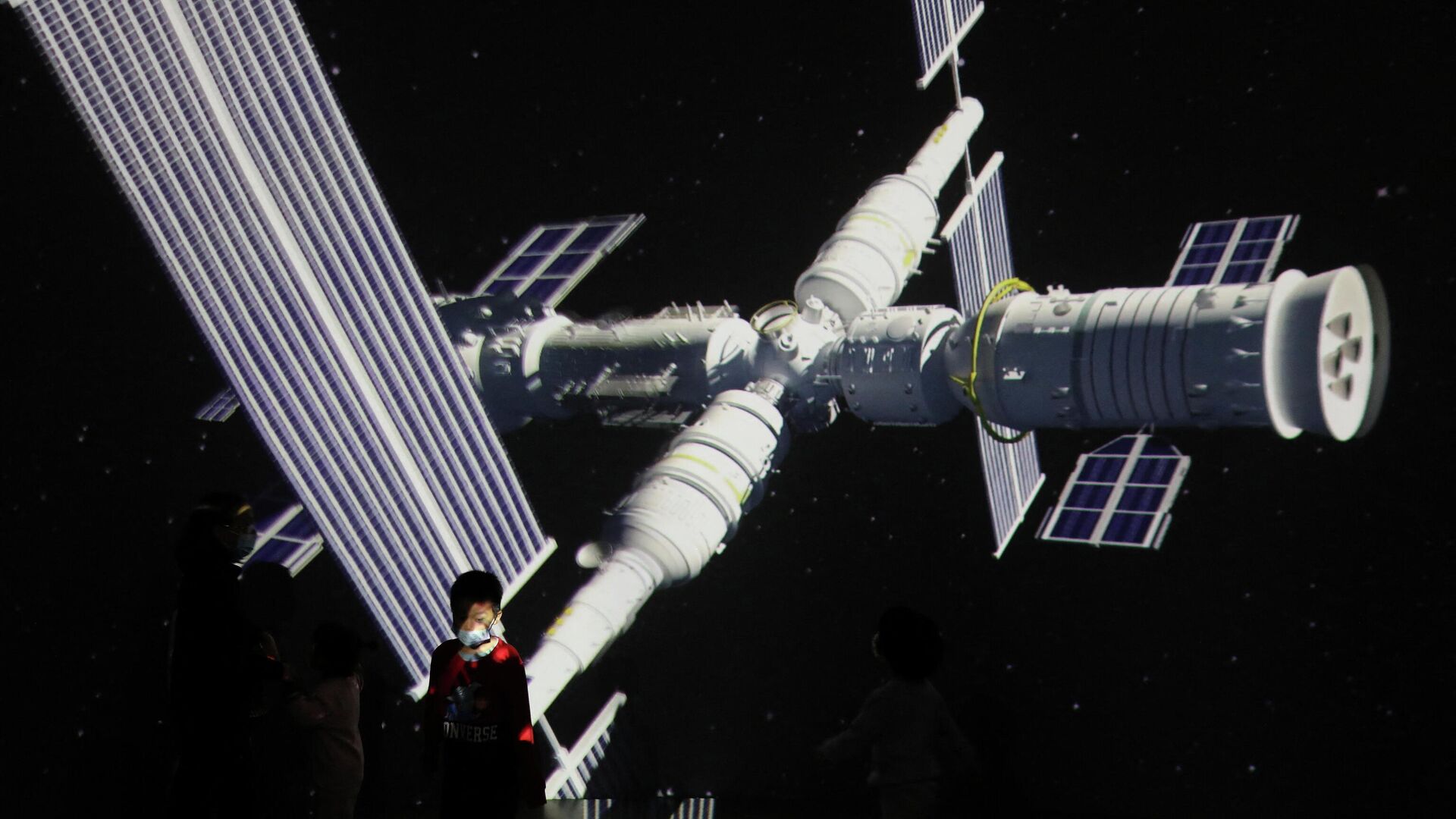https://sputnikglobe.com/20211227/chinas-space-station-conducts-preventive-manoeuvres-to-avoid-collisions-with-elon-musks-starlink-1091835023.html
China's Space Station Conducts Preventive Manoeuvres to Avoid Collisions With Elon Musk's Starlink
China's Space Station Conducts Preventive Manoeuvres to Avoid Collisions With Elon Musk's Starlink
Sputnik International
Billionaire SpaceX founder Elon Musk owns the Starlink satellites. SpaceX has deployed nearly 1,900 satellites to serve its Starlink broadband network to broaden its satellite-based Internet outreach worldwide.
2021-12-27T13:22+0000
2021-12-27T13:22+0000
2023-04-12T17:02+0000
international space station
spacex
elon musk
us
china
satellite
space
https://cdn1.img.sputnikglobe.com/img/07e5/0c/1b/1091836216_0:0:3072:1728_1920x0_80_0_0_6bf12e358a350a2e680c9f912828ab6f.jpg
China has slammed the US for not informing China or the United Nations about the activities of Starlink satellites, which allegedly endangered lives on board China’s space station. The Permanent Mission of China to the United Nations (Vienna) has said that Starlink satellites, launched by SpaceX, had “two close encounters with the China Space Station” on 1 July and 21 October this year.In the words of the Permanent Mission of China to the United Nations (Vienna), the two instances “constituted dangers to the life or health of astronauts aboard the China Space Station”.As per information shared by China, the Starlink satellite had been travelling stably since 19 April 2020 in orbit at an average altitude of around 555 km. However, between 16 May and 24 June 2021, the Starlink-1095 satellite manoeuvred continuously to an orbit of around 382 km, and stayed in that orbit.The mission underlined that China’s Space Station has travelled stably in a near-circular orbit at an altitude of around 390 km on an orbital inclination of about 41.5 degrees.The Chinese mission mentioned that the US violated Article VI of the Outer Space Treaty, which says “States Parties to the Treaty shall bear international responsibility for national activities in outer space, including the moon and other celestial bodies, whether such activities are carried on by governmental agencies or by non-governmental entities…”China’s Manned Space Programme completed five launch missions in 2021, with the successful launch into orbit of the Tianhe core module of the China Space Station, the Tianzhou-II and Tianzhou-III cargo spacecraft, as well as the Shenzhou-XII and Shenzhou-XIII crewed spacecraft. After four crewed missions, the station is expected to be completed by the end of 2022.
https://sputnikglobe.com/20211206/space-force-general-claims-china-moves-twice-the-rate-of-us-in-space-race-may-overtake-it-by-2030-1091300563.html
china
Sputnik International
feedback@sputniknews.com
+74956456601
MIA „Rossiya Segodnya“
2021
Rishikesh Kumar
https://cdn1.img.sputnikglobe.com/img/07e4/08/04/1080055820_0:0:388:389_100x100_80_0_0_40018ee210946d65d49ffba4f4c008e1.jpg
Rishikesh Kumar
https://cdn1.img.sputnikglobe.com/img/07e4/08/04/1080055820_0:0:388:389_100x100_80_0_0_40018ee210946d65d49ffba4f4c008e1.jpg
News
en_EN
Sputnik International
feedback@sputniknews.com
+74956456601
MIA „Rossiya Segodnya“
Sputnik International
feedback@sputniknews.com
+74956456601
MIA „Rossiya Segodnya“
Rishikesh Kumar
https://cdn1.img.sputnikglobe.com/img/07e4/08/04/1080055820_0:0:388:389_100x100_80_0_0_40018ee210946d65d49ffba4f4c008e1.jpg
china's space station, elon musk starlink, collision
china's space station, elon musk starlink, collision
China's Space Station Conducts Preventive Manoeuvres to Avoid Collisions With Elon Musk's Starlink
13:22 GMT 27.12.2021 (Updated: 17:02 GMT 12.04.2023) Billionaire SpaceX founder Elon Musk owns the Starlink satellites. SpaceX has deployed nearly 1,900 satellites to serve its Starlink broadband network to broaden its satellite-based Internet outreach worldwide.
China has slammed the US for not informing China or the United Nations about the activities of Starlink satellites, which allegedly endangered lives on board China’s space station.
The Permanent Mission of China to the United Nations (Vienna) has said that
Starlink satellites, launched by SpaceX, had “two close encounters with the China Space Station” on 1 July and 21 October this year.
In a note verbale, China said that on 21 October, a Starlink satellite “was continuously manoeuvring, the manoeuvre strategy was unknown and orbital errors were hard to be assessed, there was thus a collision risk between the Starlink-2305 satellite and the China Space Station”.
In the words of the Permanent Mission of China to the United Nations (Vienna), the two instances “constituted dangers to the life or health of astronauts aboard the China Space Station”.
As per information shared by China, the Starlink satellite had been travelling stably since 19 April 2020 in orbit at an average altitude of around 555 km. However, between 16 May and 24 June 2021,
the Starlink-1095 satellite manoeuvred continuously to an orbit of around 382 km, and stayed in that orbit.
The mission underlined that China’s Space Station has travelled stably in a near-circular orbit at an altitude of around 390 km on an orbital inclination of about 41.5 degrees.
The Chinese mission mentioned that the US violated Article VI of the Outer Space Treaty, which says “States Parties to the Treaty shall bear international responsibility for national activities in outer space, including the moon and other celestial bodies, whether such activities are carried on by governmental agencies or by non-governmental entities…”

6 December 2021, 23:27 GMT
China’s Manned Space Programme completed five launch missions in 2021, with the successful launch into orbit of the Tianhe core module of the China Space Station, the Tianzhou-II and Tianzhou-III cargo spacecraft, as well as the Shenzhou-XII and Shenzhou-XIII crewed spacecraft.
After four crewed missions, the station is expected to be completed by the end of 2022.



